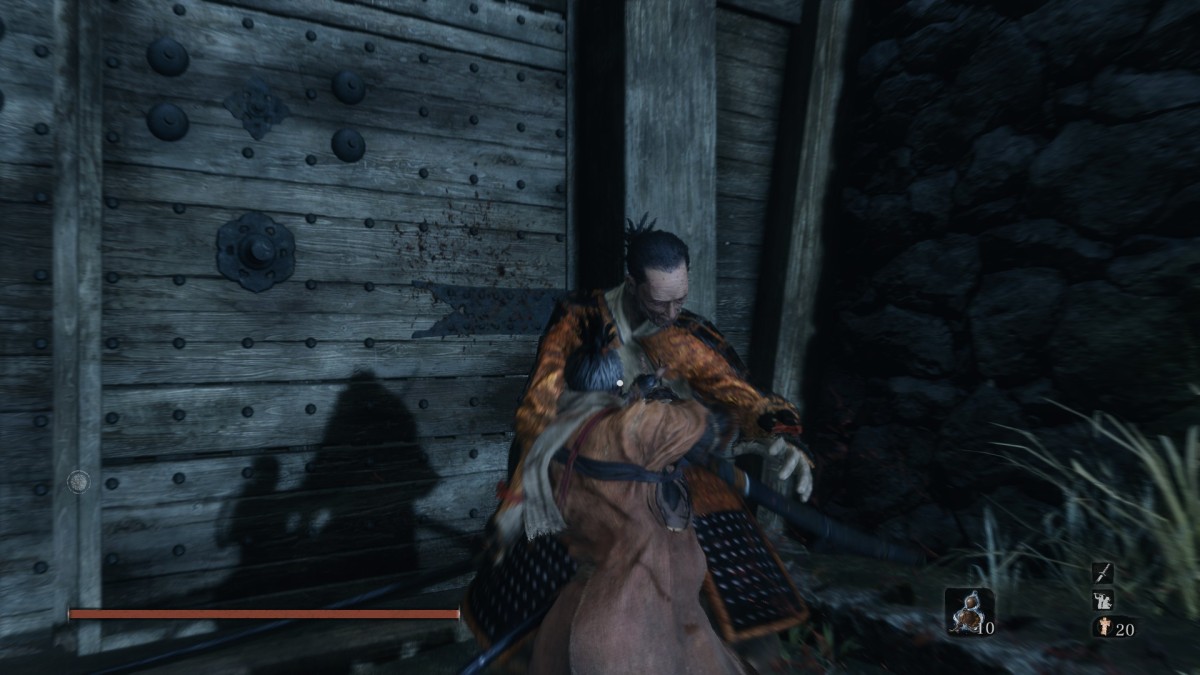After hearing how difficult and fast-paced the gameplay is and how gorgeous the game looks, I decided I’d try the newest big-budget action adventure game; Sekiro: Shadows Die Twice. Now, this was my first venture into From Software’s catalogue and for those unaware, this Japanese studio has become well known for crafting brutally difficult yet highly rewarding video games that have since garnered a dedicated fanbase.
Let’s talk about the story first, shall we?

The game is set in a fictional feudal Japan that is seemingly riddled with feuding families and mythological beasts. Sekiro is an orphaned child of war, brought up to be a shinobi by his adopted father and legendary fighter, Owl. Sekiro is our protagonist as we take control of him while a request for assistance is sent by a mysterious woman to help a young lord in escaping his war-ravaged castle.
Oh, and then you get your arm cut off and have a ‘Shinobi Prosthetic’ attached instead that has a grappling hook as well as a myriad of attachments to help you combat the varied amount of enemies and bosses that will be trying to kill you.

Weird? Yes. Cool? Definitely.
After this setup Sekiro is quite obtuse in its storytelling methods. While traditional cutscenes are used to set up major story beats, as in, literally the beginning, middle and end of the game. Most of the character and world building is set up through small tidbits of flavour text when picking up items or besting a difficult enemy. There are also NPC characters that are strewn throughout the world, each one providing very vague hints at what is going on in the surrounding area, political climate or Sekiro himself.
While generally, I thought I wouldn’t enjoy this type of storytelling method, I found myself trying to collect and correlate every piece of minute information like it was a puzzle. The downside to this being if you’re not a fan of this kind of eluding but not telling kind of story then you may struggle to invest yourself.
Onto the real meat and bones now, what’s the gameplay like?

In short; fast, challenging and incredibly satisfying. To go further in depth, Sekiro can sidestep, sprint and jump to avoid danger. His base weapon can attack, parry or block. However, as well as the health bar that you must keep track of, there is also a posture meter that builds up whenever you block an attack. When the bar fills to its maximum you’re staggered and stunned causing you to be wide open to attacks. Parrying, however, will not build up the posture meter, which means battles will consist of you going blow for blow with your opponent, parrying their attacks and countering with ones of your own in order to build up the enemy’s posture bar. When their bar is filled it will cause them to stagger and allow you to perform a deathblow, essentially executing the enemy and winning the fight.
Boss battles ramp this up a notch, often having multiple health bars, elongating the crucible of sustaining focus and having lightning fast reflexes in order to get multiple deathblows. I loved this style of combat, creating a deadly dance with your enemy as you parry, attack, jump and sidestep your way through each encounter. The word flow has never been more applicable within this games combat mechanics.

If you’re looking for a fast-paced challenge that tests your reflexes and tells an interesting albeit, difficult to piece together story, or if you’ve never tried a From Software title, I’d say this is the perfect entry point.








